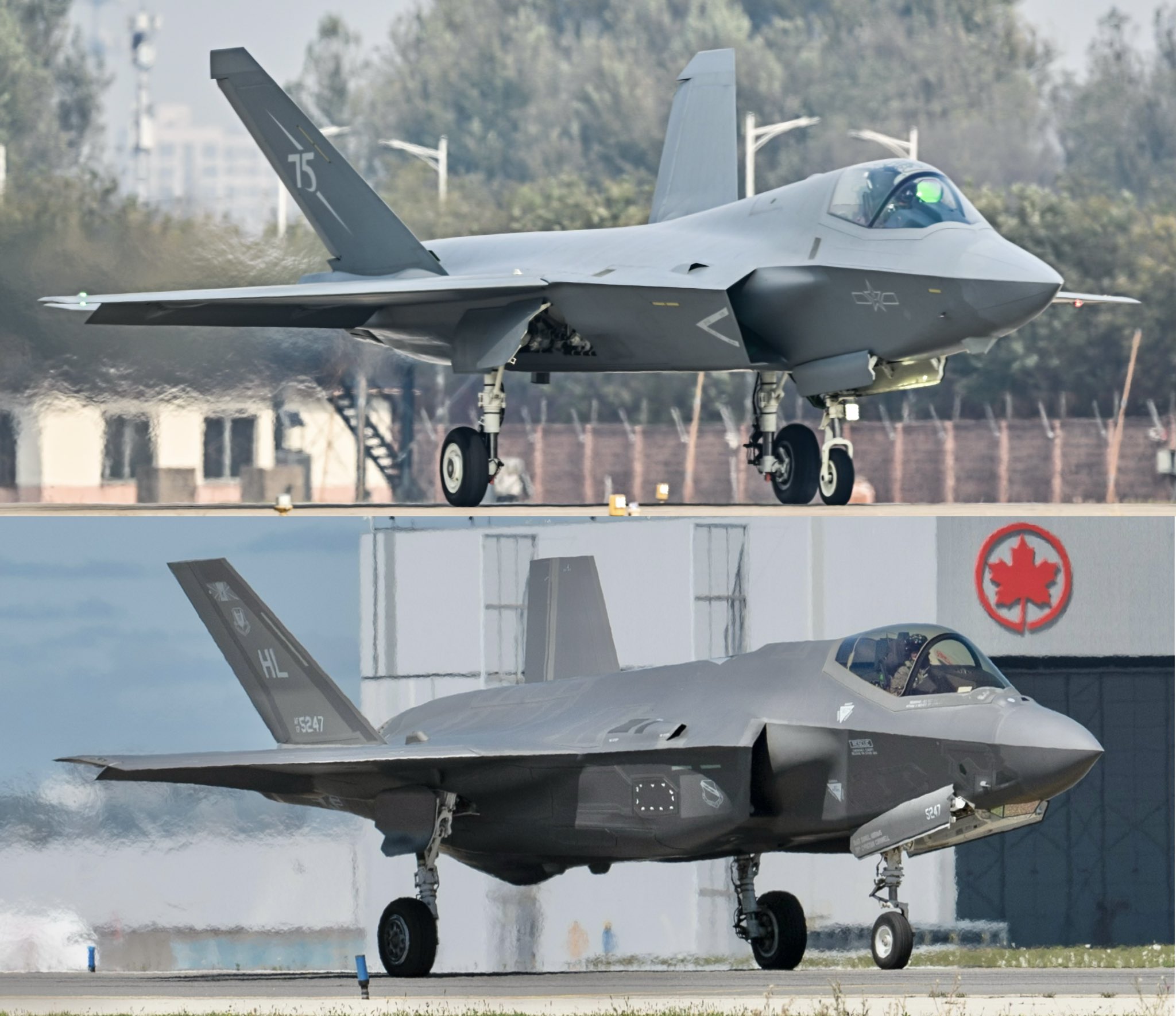SOURCE: AFI


The unveiling of China’s J-35A at Zhuhai 2024 has reignited a fiery debate among defense enthusiasts and nationalists on both sides, as comparisons with the U.S. F-35A have led to a spirited war of words. While both jets are fifth-generation fighters, each designed for stealth, agility, and multirole capability, their side-by-side comparison has sparked controversy, humor, and debate across social media.
Many Chinese netizens have praised the sleek design of the J-35A, with some saying it even surpasses the aesthetics of the F-35A. “I didn’t think the F-35 was so ugly before, but now it’s really ugly. The J-35 is currently the best-looking stealth fighter in the world,” commented a Chinese user, echoing the sentiment that the J-35A’s design surpasses the American F-35A in appearance. Others compared it to a “stealthier Mig-29,” nodding to its aesthetic similarity to Russia’s twin-engine jet, while maintaining that the aircraft has distinct Chinese engineering.
American commentators, on the other hand, responded to this admiration by humorously dubbing the J-35A the “Temu F-35,” referencing a popular Chinese e-commerce platform known for selling imitation products. This response highlights the skepticism around China’s defense designs, as critics argue the J-35A draws too heavily from the F-35A’s design blueprint. Some claim that the similarities are not just aesthetic, suggesting that China might be aiming to mimic the F-35A’s success through its design and “J-35” designation, positioning itself as a counterpart to the American jet.
The naming of the J-35A, which mirrors the F-35’s “35” nomenclature, has stirred speculation that China aims to position its jet as an equal rival to the F-35A. Naming the J-35A so closely to the American jet is seen by some as an assertion of parity with the U.S., hinting at a desire to portray the J-35A as an aircraft of equal caliber and stature in the global defense landscape. This deliberate choice seems to suggest that China wants to directly challenge the F-35A’s reputation by implying that the J-35A can match or even exceed its capabilities.
Though similar in appearance, the J-35A and F-35A differ in several aspects of design and intended functionality. Chinese commentators have been quick to point out that similarities in stealth aircraft design are common due to the physics behind stealth technology, and that while the J-35A might look similar to the F-35A, its engineering is unique.
Here are some key distinctions between the two:
Weapons Bay: Both aircraft feature internal weapons bays to maintain stealth, but differences in bay design and capacity reflect their varied roles and operational doctrines. The F-35A’s weapons suite has been extensively tested in various combat roles, whereas the J-35A is yet to undergo the same level of operational scrutiny.
Engines: The J-35A is powered by Chinese-developed engines, and while specific details remain classified, these engines are not yet on par with the F-35’s Pratt & Whitney F135 engine in terms of thrust or efficiency. This difference impacts the J-35A’s performance, especially in extended missions or high-speed maneuvers.
Stealth Coatings and Radar Cross-Section (RCS): While both jets are designed for low observability, experts suggest the F-35A has more advanced stealth coatings and lower RCS, as it benefits from decades of U.S. research in radar-absorbing materials. The J-35A, while built for low observability, is speculated to have less advanced stealth technology compared to its American counterpart.
Avionics and Sensors: The F-35A’s strength lies in its integrated avionics suite, which provides real-time data-sharing capabilities and situational awareness through its Distributed Aperture System (DAS) and Electro-Optical Targeting System (EOTS). The J-35A, although modernized, has yet to demonstrate a comparable level of sensor fusion and networked warfare capability.
Social media has amplified the J-35A vs. F-35A debate, with commentators split on whether the aesthetic comparisons hold any significance. Some argue that the J-35A, despite bearing a resemblance to the F-35A, represents the maturity of China’s own aerospace industry rather than an imitation. Others maintain that such comparisons overlook the critical differences in engineering, combat effectiveness, and operational history. As one commenter noted, “Aesthetics do not matter. It’s the engineering underneath that matters.”